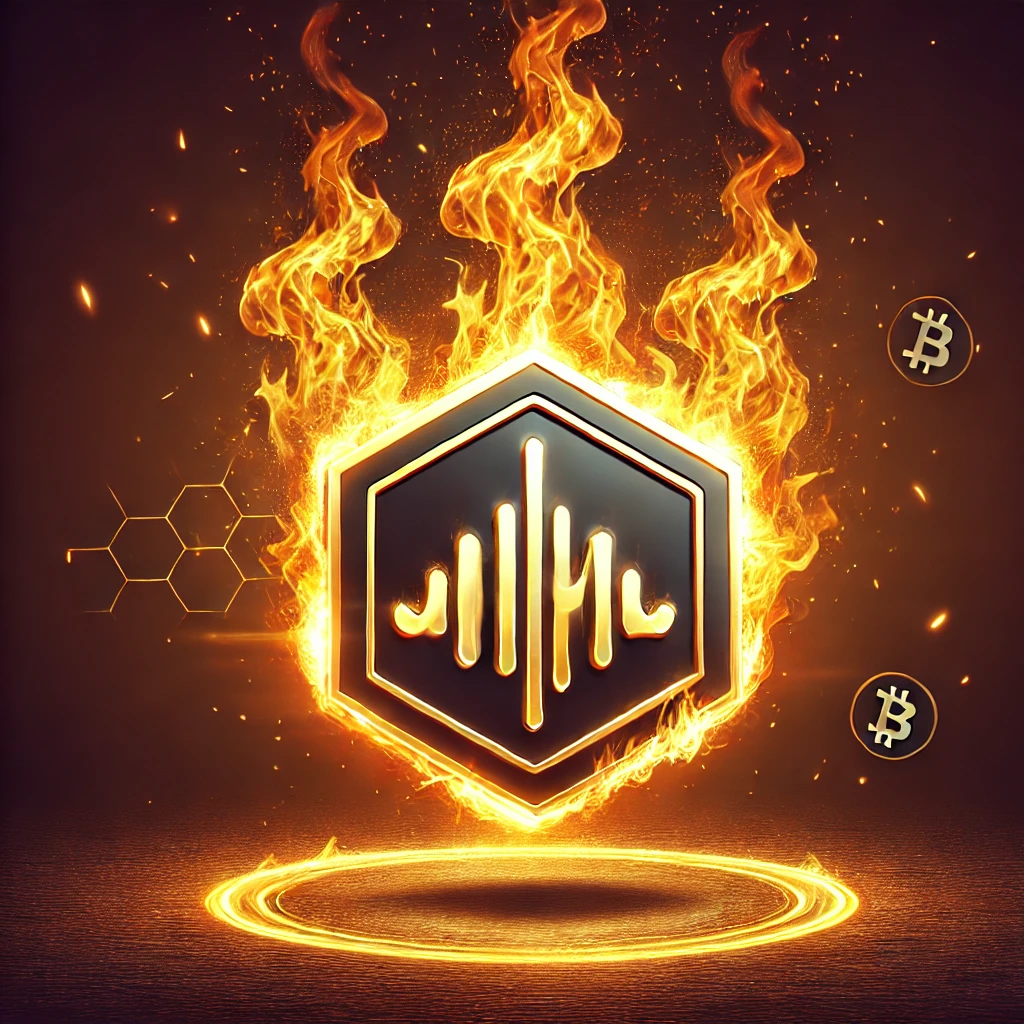– Just a Crypto Sales Pitch?

“Buy-and-burn” mechanisms are one of the most commonly touted strategies for increasing the value of tokens in the cryptocurrency world. The narrative is simple: by using a portion of revenues or transaction fees to buy back tokens from the open market and then burn (permanently remove) them from circulation, the supply decreases, and—according to basic economic theory—reduced supply equals increased value for the remaining tokens.
It sounds almost too good to be true, right? And for many newcomers, it’s pitched as a surefire way to see their tokens appreciate over time. But does the “buy-and-burn” mechanism actually work as promised, or is it little more than a sales pitch dressed up as sound tokenomics?
Let’s break this down and take a closer look.
The Core Assumption: Constant or Increasing Demand
The idea behind buy-and-burn rests on a key assumption—that demand will remain constant or even increase. In an ideal world, reducing supply while keeping demand stable should theoretically lead to price appreciation. But in the real world, especially in the cryptocurrency market, demand is anything but stable.
In the niche world of smaller tokens, the crypto community tends to be fickle, often moving from one project to the next, seeking out the latest and greatest opportunities. Interest in tokens saturates quickly, and early adopters frequently sell off their holdings and move on once the hype wears off. This leaves behind a dwindling pool of holders, and when demand falls or stagnates, no amount of buy-and-burn can prop up the price. You can burn all the tokens you like, but if no one’s buying, it won’t matter.
Market Saturation: The Reality of Token Hype Cycles
For relatively obscure tokens, the excitement generated by a buy-and-burn mechanism typically doesn’t last long. Once the token has captured the interest of its initial wave of adopters, the market reaches saturation. At that point, the narrative of burning supply to create value begins to falter. Without constant influxes of new buyers, reduced supply doesn’t lead to higher prices, and early adopters often exit, leaving newcomers holding the bag.
In truth, the success of buy-and-burn depends on the hype—not the actual mechanics of token burning. The community’s excitement over the deflationary pressure can lead to short-term price spikes, but once the hype dies down, so too does the demand. At this point, the narrative alone drives value, and when that fades, so do the potential gains.
Everyone Knows When the Burn Happens
Another flaw in the “buy-and-burn” narrative is transparency. Burn schedules are often known in advance, which means the market has plenty of time to factor in the expected burns. Savvy traders and speculators, fully aware of the upcoming burn, will position themselves accordingly, with many anticipating the effects well before they take place. By the time the burn happens, its impact is likely already priced in, making the actual event anti-climactic from a price movement perspective.
In practice, these buy-and-burn events tend to create a short-term bump in price, but the long-term impact is minimal once the market has adjusted. The price often reverts to its previous state after the initial excitement dies down.
A Marketing Tool, Not a Price Mechanism
Ultimately, the buy-and-burn mechanism is more about narrative than it is about a direct mathematical cause-and-effect relationship. While reducing supply may seem like a good idea in theory, it’s the market’s belief in that idea that really drives price action. If the community believes in the project and its long-term potential, then buy-and-burn can create a sense of value. But once the market loses faith or interest, no amount of token burning will stop the price from falling.
For smaller, speculative tokens, buy-and-burn is often a tool for creating short-term excitement. It generates headlines, gives promoters something to talk about, and drives hype in the early days. However, without real-world utility, sustained demand, or genuine innovation, this mechanism is unlikely to support long-term value growth.
The Reality: Burns Are Baked into the Market
Given how well-publicised these mechanisms are, most traders treat burns as part of the token’s overall formula. Everyone knows how the system works, and they act accordingly, with early positioning, speculative trading, and quick exits. The effect of burning tokens is, therefore, largely nullified by market expectations. The burn is baked into the price from the outset—leaving its impact mostly psychological rather than practical.
Conclusion: Be Wary of the Narrative
In the end, the effectiveness of buy-and-burn mechanisms hinges on the power of the narrative. If enough people believe that reduced supply will lead to higher prices, the market may temporarily reflect that belief. But as with most things in crypto, when the story starts to fade, so do the prices. Without real-world utility or long-term innovation, buy-and-burn mechanisms are unlikely to create sustainable value. Instead, they often serve as a clever marketing strategy, designed to keep investors hooked—at least until the next big thing comes along.
As a speculator, it’s important to see through the hype and understand that while buy-and-burn can drive short-term price action, its long-term effectiveness is limited by demand, market saturation, and how well the narrative holds up. Keep your eyes open and always ask yourself: is the token offering real value, or just a story?

Leave a Reply